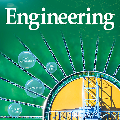As the space industry continues its rapid development, humanity is poised to expand beyond Low Earth Orbit (LEO), seeking to establish permanent presence on the Moon and beyond. While space travel has traditionally been the domain of a small number of highly specialized professionals, a new era of human exploration, involving non-space actors and stakeholders, is now becoming a reality. In spite of this development, most space habitats are still designed for a narrow target group. This paper seeks to address this deficit by rethinking the established design approaches, typically limited to tackling engineering and challenges of human space exploration (such as radiation or hypogravity), by instead adopting an interdisciplinary "big picture" perspective encompassing social, psychological and cultural aspects of future space habitats. By elaborating and reflecting on our concept, this paper seeks to demonstrate the importance of a trans-disciplinary approach to designing thriving sustainable colonies beyond LEO. We demonstrate the potentially key role of design as mediator in advancing macro-strategies promoting thriving existence and sustainable growth. With this approach we tackle big-picture questions about humanity's future and prospects amongst the stars.
翻译:由于航天工业继续迅速发展,人类已准备超越低地球轨道,寻求在月球及更远的地方建立永久存在;虽然空间旅行传统上是少数高度专业化的专业人员的领域,但人类探索的新时代,涉及非空间行为者和利益攸关方,现在正在成为现实;尽管有了这种发展,大多数空间生境仍然是为狭窄的目标群体设计的;本文件力求通过重新思考既定的设计方法来解决这一不足,通常限于处理人类空间探索的工程和挑战(如辐射或虚度),而不是采取涵盖未来空间生境的社会、心理和文化方面的跨学科“大图景”观点;本文件力求通过阐述和反思我们的概念,表明设计多学科方法对于设计低地以外繁荣的可持续聚居的重要性;我们展示了设计作为促进繁荣生存和可持续增长的宏观战略的调解人的潜在关键作用;通过这一方法,我们处理有关人类未来和恒星之间前景的大型问题。





